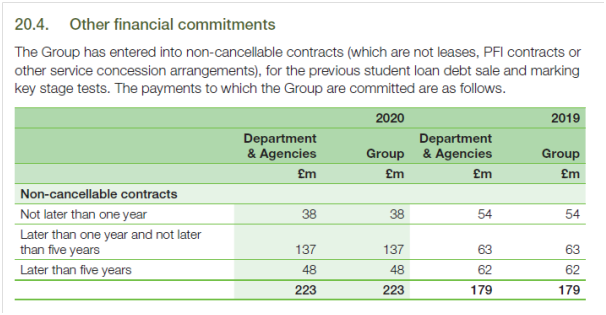At some point we might get some actual higher education policy out of the Department for Education (DfE), rather then endless crackdowns on the “long tail” of the market.
There’s rumours of a (next) TEF delay which we might assume ministers will take an interest in, and a signature manifesto commitment on “raising the standards of teaching” to deliver.
It all raises the question – what should Labour’s agenda on teaching be? How might it realise it? What levers will it pull?
Of course it’s the case that whatever the agenda, there’s a need for the right funding systems (for both students and providers) and regulatory architecture – and those will always dominate the discussion.
But you’d like to think there were other things, too.
Reinstate the QAA as the Designated Quality Body for England
A nice and easy start – DfE should issue ministerial guidance directing the Office for Students (OfS) to re-designate the QAA as the primary quality assurance body. The QAA has long maintained international credibility and alignment with European standards – something England has steadily drifted away from since Brexit.
It’s not just a technical concern – it threatens the international recognition of English qualifications at precisely the moment when global educational mobility is increasing. OfS has tried to go it alone on quality – the experiment has failed. No shame in admitting it.
Re-establish periodic review and enhancement expectations
DfE should direct OfS to develop requirements for periodic review through regulatory guidance, with funding for QAA to develop a new enhancement framework appropriate for England’s context.
One of the quietest casualties of England’s regulatory experiment has been the loss of enhancement culture. Where periodic review encouraged reflection and improvement, the pendulum has swung decisively toward compliance and risk-management. England now lags behind Scotland, Wales, and Northern Ireland, where enhancement remains central to quality regimes. We now have a sector where teaching innovation happens despite, not because of, the regulatory framework. It could be different.
Scrap the current TEF and implement subject-level TEF based solely on metrics
First, abolish continuation as a metric that somehow represents “teaching quality”. We’re so good at it internationally that it’s starting to look like kidnapping, and seriously harms the sort of flexibility envisaged in the LLE or required from our breathtaking levels of decision regret.
Then DfE should issue guidance to OfS to develop a revised, metrics-based TEF framework operating at subject level. As currently constituted, the TEF neither drives genuine improvement nor provides meaningful information to prospective students. A subject-level TEF grounded in robust metrics would offer more granular insights while slashing the cost and reducing the burden of institutional storytelling that has become the hallmark of the current approach.
And it would prevent what is likely to be a key “misleading practice” issue under the DMCC act – a “TEF Gold” banner appearing over the door of a faculty whose metrics would suggest a requires improvement rating.
Regulation for the struggling, enhancement for the thriving
A simple distinction should be made in the approach to quality. For provision failing to meet minimum standards (below B3 thresholds), robust regulatory intervention through OfS remains appropriate. More boots on the ground if anything. However, for provision meeting or exceeding these standards, we need to shift from compliance-checking to enhancement-driven approaches led by the QAA.
In other words, let OfS carry on its inspections against minimums when its thresholds aren’t met at subject, provider or subcontractual status level, and let quality assurance and enhancement via the QAA sit alongside it for everyone and everything else. Neat.
Require publication of external examiner reports
External examining is one of the oldest, most trusted mechanisms for maintaining academic standards in the UK and causing collaboration between universities – but it has become increasingly invisible. Reports are buried in back-office systems, rarely seen by students, and seldom discussed publicly.
DfE should ask OfS to require the publication of external examiner reports, ideally with departmental responses. Visibility would encourage honest, critical engagement with standards, and bring students into the conversation about academic quality. After all, if someone outside the course is checking the quality, why shouldn’t those taking it see what they say?
Establish targets and metrics for staff teaching training
Universities are packed with subject experts, but expertise in a field doesn’t automatically translate to expertise in teaching it. The uneven distribution of pedagogical training and teaching qualifications means students experience wildly different teaching quality depending on their course, their institution, and sometimes just luck of the draw.
OfS should be asked to introduce and publish metrics on staff development, making it clear which institutions invest in teaching capacity. Yes – an input measure! One that students actually want.
Require compulsory module evaluations with visible results for loan-funded modules
Every module of credit that accrues a loan charge should be accompanied by a compulsory evaluation, with results that students can see – including action taken in response to previous feedback. A “comply-or-explain” expectation would transform the granularity of information available to students making module choices under the Lifelong Loan Entitlement, and improve teaching. DfE should ask OfS to apply one.
If students are paying for it (and increasingly borrowing for it), they deserve to know what they’re getting. Student reps can then work with the data and work with departments on problem-solving instead of being asked to supply feedback themselves.
Reduce the number of subject benchmark statements
The current proliferation of subject benchmark statements has created a rigid and prescriptive framework that stifles innovation and interdisciplinarity. If they were reduced and broadened, there would be more space for flexible curriculum design that responds to emerging fields and changing student needs. That’s about defining quality and standards in ways that encourage creativity and adaptation – rather than compliance and conformity. The EU is hurtling in this direction anyway – would be nice to… align at least. That should go in the ministerial direction letter too.
Convene a partnership between NUS and SUs for national student-led teaching awards
Student-led teaching awards have become an important feature at most universities, celebrating innovative and impactful teaching practice. But their impact remains localised, with limited opportunities to identify and share learning across the sector.
A national event via a DfE-convened partnership would elevate the student voice in defining teaching excellence, create powerful incentives for innovation, be a good PR opportunity for the sector and the department, and offer a rich source of data on what works for students. It could even be held in 20 Great Smith St to drive down the cost.
Direct OfS to mine NSS free text responses for insights
The quantitative metrics of the National Student Survey tell only part of the story, and OfS is sat on a couple of decades of hidden intel – free text comments contain rich insights into student experiences that are currently underutilised.
With appropriate anonymisation and ethical safeguards, comments could identify emerging concerns, highlight innovative practice, and provide a more nuanced understanding on good teaching that numbers alone cannot capture. Another one for the letter.
Establish a clear definition of learning gain
Despite extensive discussion about “learning gain,” there’s no clear consensus on how to define, measure, or evaluate it. The ambiguity undermines meaningful comparison and improvement – so establishing a clear, shared definition, focused not just on knowledge acquisition but on skill development, mindset shifts, and capability building means we’ll get a meaningful framework for universities to then further define for assessing educational value and building degree transcripts. “Dear Susan and Edward, we expect…”
Establish a regulatory domain focused on “learning environment”
Currently, various aspects of the learning environment – mental health support, physical spaces, digital infrastructure, library resources – are regulated through bafflingly disconnected processes. The fragmentation creates bureaucratic burden – despite this stuff being essential underpinners of good teaching and learning.
Asking OfS to establish “learning environment” as a distinct integrated regulatory domain (like it is in most other countries in Europe) would mean a rounded approach – recognising how these elements interact to shape student experiences and outcomes, and clocking that a lot of good learning is self-directed. It would also allow for more proportionate, context-sensitive regulation while maintaining a focus on student needs and concerns.
Establish a TASO equivalent for teaching enhancement
England needs its own equivalent to Scotland’s Quality Enhancement Framework – a body akin to TASO (Transforming Access and Student Outcomes) that can convene national conversations, fund pilots, and broker communities of practice around teaching improvement.
Maybe QAA gets to do it, maybe Advance HE. Maybe someone else. But it’s needed nationally, probably at subject level, and should involve students drawn from academic societies. Can’t DfE convene something? It should CETL for nothing less.
Push for associate membership of European University Alliances
Brexit has left UK higher education increasingly isolated from European teaching networks, particularly the European Universities Initiative. They are building the future of cross-border education – shared degrees, joint quality standards, collaborative innovation – while England watches from the sidelines. DfE should push for associate membership of these initiatives to ensure English universities (and their student leaders) are plugged into the networks where the most exciting teaching innovations are emerging.
Implement DfE approval for franchising arrangements based on qualitative criteria
DfE should establish a dedicated unit with oversight powers for franchising approvals, with clear guidance on acceptable quality thresholds – as friends in FE somewhere in Great Smith St do. The proliferation of “business/cities” subcontracted provision has created regulatory blind spots where quality can quietly deteriorate – so DfE should hold approval rights for these arrangements based on demonstrable need, track record and quality assurance, not just market opportunity.
Apply the OfS fairness condition universally across the sector
DfE should instruct OfS to implement its proposed new fairness condition without exemptions through clear ministerial guidance, requiring equal application regardless of provider type or history. If we’re not careful, we’ll focus regulatory attention on newer providers while established institutions escape scrutiny.
If a student at Oxford experiences the same poor practice as one at a small private provider, shouldn’t they have the same protections? Fairness cannot be conditional based on institutional prestige or history – either students have rights to good teaching, or they don’t. They do.
Establish university-level ombuds and a duty to learn from complaints
DfE should fund a pilot programme for university-level ombuds, followed by regulatory requirements through OfS. The duty to learn from complaints would be implemented through revised regulatory conditions requiring public reporting of complaint outcomes and resulting changes. University-level ombuds – independent officers with investigatory powers and public reporting requirements – could transform how institutions respond to student concerns.
Rather than treating complaints as irritants to be managed, they would become valuable sources of insight for improvement. OfS should also establish a duty for universities to publicly report on what they’ve learned from complaints and appeals (both uphelds and others), and how practice has changed as a result.
Require OfS to respond to the National Student Survey each year
DfE should issue ministerial guidance requiring OfS to produce an annual NSS response document with clear action points – identifying trends, highlighting innovative approaches, and using the data to inform regulatory priorities. Students take the time to respond to the NSS. It’s time the regulator did too. As if students score assessment and feedback badly every year and nothing is done!
Strengthening student rights and voice
For all the rhetoric about students as partners, their voice in institutional decision-making remains precarious. The regulatory framework mentions consultation more than it meaningfully embeds representation. Many still treat student engagement as a box-ticking exercise rather than a fundamental right.
OfS should be told to enshrine stronger rights for students to influence decisions, the curriculum, know their rights, seek redress, and access minimum support for their representative bodies. And every provider should be required to support effective independent student organising (ie SUs) and support for students – not as an optional extra, but as a core expectation given students’ textbook vulnerability.
Establish “access to the loan book” criteria to drive credit transfer
England’s student finance system remains one of the major obstacles to student mobility. If you switch institutions, change course, or build credits in non-traditional settings like the workplace, transferring that credit remains difficult and under-rewarded.
Tying access to student loan funding to a provider’s willingness to recognise credit means DfE could incentivise the sector towards a more flexible future where students have genuine mobility between institutions and learning contexts. Yeah, I know Oxford and Cambridge and a slice of the Russell Group would object. They can probably afford to go exempt.
Task OfS with monitoring subject/module availability and facilitating collaboration
The regulator should be asked to monitor subject and module availability – not just full course provision – and be given a duty to drive collaboration across the sector where gaps emerge. Medr has by its minister already. When competition constricts provision, regulation must enable collaboration.
This might mean funding shared provision between institutions, brokering inter-university module access, or investing in digital platforms that let students study beyond the borders of their enrolled provider. Quality needs choice, and choice has to be protected in the architecture of the system.
Enshrine the right to build credit across multiple institutions
What if we enshrined the right for students to accrue credit across multiple higher education institutions? And a domestic mobility scheme – akin to Erasmus, but within the UK – could support students spending terms or modules at other universities, either physically or virtually, learning lessons about excellent teaching along the way. Jacqui would have to have a conversation with Heidi Alexander over the train fares, but it would be great – and we’ve seen it work in several European countries now.
Allow students to accrue credit through employment and service learning
Not all “teaching” is done by “teachers”. All students – undergraduate and postgraduate – should have the right to accrue up to 10 ECTS credits per year in recognised learning outside their main subject area, via employment or service learning. For postgraduates, this could extend to 15 ECTS. Whether working in a hospital, mentoring in a school, or delivering a community project, students should gain formal credit for skills developed through real-world application.
That would reframe how we think about employability – not just as abstract skills development, but as validation of the meaningful, real-world work many students already juggle alongside their studies. It would also encourage universities to connect more deeply with their communities, valuing not just what students learn in the university, but what they contribute through it. The LLE should really be focussed on delivering flexibility in what’s there now, not spending hours figuring out how to stop fraud over single modules.
Require credit-bearing student induction and transition support
Every institution should be told to offer structured, credit-bearing induction and transition support – developing core competencies in academic integrity, independent study, and navigating support systems – to ensure that all students, regardless of their educational background, have the tools they need to succeed.
And while graduate attributes are mapped in fine detail, the early-stage student journey is largely ignored. An embedded framework that builds progressively – with assessment points and optional modules on civic leadership, digital fluency, and self-directed learning – would connect coherently to broader goals around credit mobility and skills development.
Introduce credit-bearing interdisciplinary “civic lab” modules
DfE should establish a dedicated civic engagement fund with partners in DCMS to support development and implementation, alongside regulatory expectations for civic engagement through the curriculum. Credit-bearing, interdisciplinary “civic lab” modules across all degree programmes would allow students to apply their disciplinary knowledge to real-world problems while developing transferable skills.
Develop competency-based academic transcripts
Revisit Burgess and announce the end of the UK degree classification system. It’s harmful twaddle. A competency-based academic transcript would provide a more helpful picture of graduate capabilities, detailing specific skills, contributions, and attributes developed through their studies.
It would offer employers and postgraduate admissions tutors a more granular view of student achievement, and would encourage universities to think more broadly about the skills and attributes they’re developing through their teaching. The degree should be about what’s interesting about that graduate, not whether they’re in one of four impossibly broad categories. Just announce it. See what happens.
Embed inquiry-based learning into teaching quality expectations
DfE should direct OfS and QAA to develop clear guidance on inquiry-based approaches in teaching, backed by targeted enhancement funding for curriculum development and staff training.
At its heart, that’s about moving beyond compliance-driven education to something more transformative. We should embed inquiry-based learning into teaching quality expectations, requiring that all students, in all disciplines, experience modules built around active investigation rather than passive content delivery. Module evaluations should track the extent to which learning creates independence, reflection, and curiosity – not just satisfaction scores.
Communicate NSS standards to students from the outset
Currently, the National Student Survey functions primarily as a retrospective judgment tool – students reflect on their experiences only after they’ve happened. But the questions within the NSS implicitly define standards for good teaching, assessment, and support.
If these were made explicit from the outset, students could work collaboratively with academics throughout their courses to realise these standards, rather than just offering critiques after the fact. Doing so would transform the NSS from a retrospective satisfaction measure to a developmental framework that drives ongoing improvement through partnership between students and staff, and empower students to articulate their expectations clearly and engage in constructive dialogue throughout their studies. Pop it in the letter.
Extend the National Student Survey to postgraduate students
The experiences of postgraduate students remain considerably less visible than those of undergraduates. Yet these students make up a significant proportion of the higher education population and face distinct challenges around supervision, research support, and career development.
Extending the NSS to postgraduate taught and research students – with questions appropriately tailored to their contexts – would shine a light on these experiences and drive improvement in areas that are currently under-scrutinised.
Implement an all-applicant entry survey via UCAS
Universities currently receive minimal information about their incoming cohorts’ learning needs, preferences, and educational backgrounds – and without that, how can the teaching ever be excellent? It makes it difficult to tailor provision effectively or identify potential support needs early. A universal entry survey, administered through UCAS, would provide invaluable data on learning styles, academic concerns, skills gaps, and support requirements.
With appropriate data protection safeguards, this information could be shared with providers to inform course planning, induction programmes, and support services. It would also allow for more personalised approaches to teaching and learning, so students receive the support they need from day one rather than waiting for problems to emerge.









